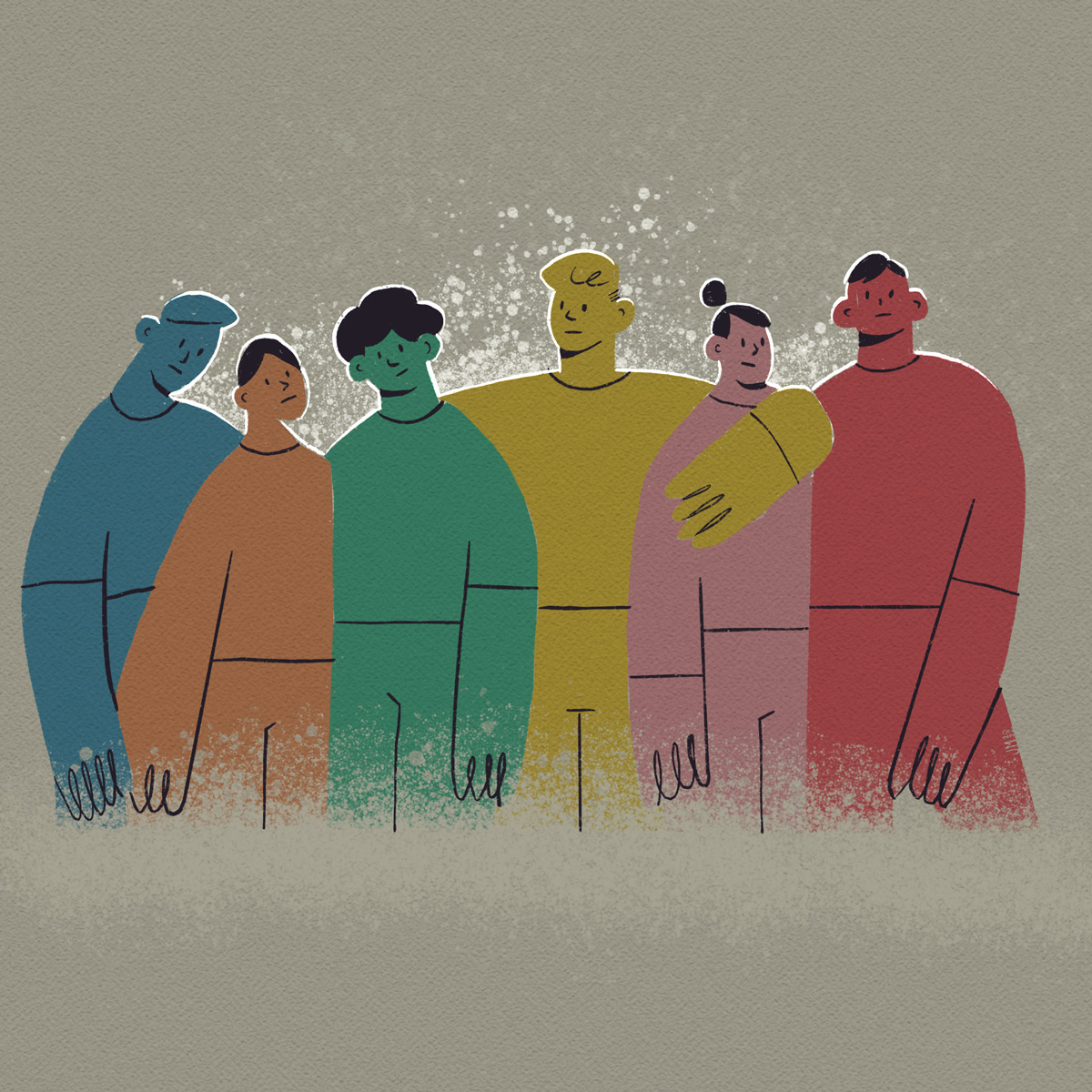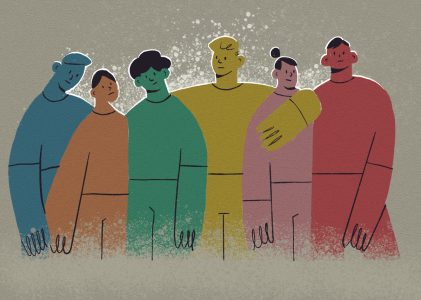Men die by suicide at startlingly high rates. Why does this happen and what can we do about it?
Did you know that men are nearly 4 times as likely to die by suicide than women? Have you heard that white men ages 45 and older have the greatest risk, with those ages 85 and older at the very top? If your answer is “No,” you’re not alone. Male suicide is a big problem that we aren’t talking about.

Why is this happening?
Not talking, in and of itself, may be part of the problem. As a society, we still feel squeamish about boys and young men expressing feelings that could be interpreted as weakness, such as crying when they hurt themselves or when they feel scared or sad. Because we socialize boys to reject feelings they perceive as weak, they’re likely to spend their lives hiding the full range of their emotions. This is painful, damaging, and maybe even dangerous.
Being unable to express emotions makes it hard for men to build supportive and fulfilling relationships with romantic partners, friends and other allies. It also makes it hard for them to ask for help. Research shows that conforming to traditional masculine roles may prevent men from seeking mental health treatment and from fully engaging in treatment when they do receive it. All of these consequences spell trouble when life gets stressful.
A recent study examined the CDC’s National Violent Death Reporting System from 2016-2018. Of the 70,376 US males who completed suicide during that time, 60% had no known mental health conditions (KMHCs). Compared to men with KMHCs, men without KMHCs more frequently:
- Died by firearm
- Tested positive for alcohol
- Experienced relationship problems, arguments or other personal crises in the time shortly before their deaths. Arguments frequently precipitated suicide and many occurred during or within a day of the suicide.
These findings suggest that these men felt overwhelmed by their own distress and took their lives impulsively. If we’d taught them better coping skills or if they hadn’t had easy access to a lethal weapon, things probably would have ended differently.
How do we make this better?
As a society, we must challenge our ideas about traditional masculinity and the dangerous ideal of the stoic warrior. Hollywood is littered with examples of this trope – think John Wick, Daniel Craig as James Bond, or pretty much any Liam Neeson character. We must stop telling boys to “shake it off” when they hurt themselves. We must allow them to feel what they feel, without shame, and we must teach them to cope with those feelings in healthy ways.
Ultimately, men need emotional support from other men. That requires feeling safe to express vulnerability with each other.
Toward that goal, Australian advertising executive Simon Lee created the Boys Do Cry campaign in 2021. The campaign includes a beautifully shot and compelling music video that remakes The Cure’s song ‘Boys Don’t Cry’. The video features The Real Men’s Choir singing about their struggles and breaking down the barriers that keep men from expressing their feelings and seeking support. [It might sound a little too earnest, but it really is worth the watch.]
Lee found inspiration for this campaign from his own resistance to asking for help. In an interview with Hack, Lee admitted that it took him 30 years to tell his doctor that he suffered from anxiety. He said, “The main thing that stopped me was this nagging voice inside my head that when things get tough you have to man up and deal with it yourself and not express your emotions.”
Dallas Woods raps in the music video and felt inspired to do something about the male suicide epidemic after losing too many people in his community to suicide. In an interview for the campaign, Woods said, “I’ve lost a lot of brothers and a lot of really close friends to the fact that they think that asking for help was too much of a burden.” In order to break this trap, Woods says, “We’ve got to normalize men crying, men asking for help. Normalize it to the point that it’s a part of just your everyday routine.”
If we want men to feel comfortable embracing their “whole” selves, tears and all, we have to prove that we mean it. Supporting media that challenges harmful stereotypes about masculinity is a small but important step toward normalizing healthier models for male behavior.
What can we do right now?
In the short term, we need to look out for the men in our lives and ask how they’re doing. If a friend loses a job, breaks up with a partner, or experiences some other personal crisis, encourage them to talk about what they’re going through. Keep these tips in mind:
- Try to normalize their experience by saying something like, “Break-ups are really tough. How are you feeling about it?”
- Give them your full attention.
- Acknowledge their feelings – don’t try to argue that they shouldn’t feel the way they do.
- Don’t patronize or judge them. Don’t say, “Things could be worse.” Instead ask, “What would make you feel better?” or “What can I do to help?”
- Reassure them that things can get better. With the right help or treatment, they can feel better again.
- Encourage them to avoid using alcohol or drugs, since that could lead to reckless behavior and make them feel worse.
- Look out for signs that they might hurt themselves or someone else.
If they’d benefit from talking to a professional, help them make an appointment with their primary care doctor or help them find a mental health provider in their local area or online. The National Institute of Mental Health (NIMH) website lists resources for finding mental health providers.
What signs should we look out for?
These feelings or behaviors often go along with suicide:
- Talking or joking about suicide. They might say something like, “I wish I’d never been born,” “I should just end it all,” or “I’m going to kill myself.”
- Talking about reuniting with a deceased loved one
- Feeling hopeless, helpless or worthless
- Being preoccupied with death
- Losing interest in favorite hobbies and activities
- Withdrawing from other people, wanting to be alone
- Giving away possessions or settling affairs
- Visiting or calling people they care about out of the blue (saying goodbye)
- Behaving recklessly
What to do for a friend in crisis
If your friend is in immediate danger, call the National Suicide Prevention Lifeline number (988) to speak to a trained counselor. You may call 911 for life-threatening emergencies.
Otherwise, the NIMH recommends these five steps you can take to #BeThe1To help someone in distress:
- Ask: “Are you thinking about killing yourself?” This is tough to ask but can help prevent harm.
- Keep them safe: Ask, “Do you have a plan?” and make the plan less available to them. Remove or disable lethal items in their home to keep them from acting impulsively.
- Be there: Listen and try to understand what they’re thinking and feeling. Research shows that acknowledging and talking about suicidal thoughts may reduce them.
- Help Them Connect: Text or call 988. You can also help them connect with a trusted individual like a family member, friend, spiritual advisor, or mental health professional.
- Stay connected: Reach out to them after the crisis. Studies show that suicide deaths go down when someone follows up with an at-risk person.
Next Steps
Take care of yourself and the people around you, and seek help when you need it.
If you or someone you love would benefit from talking to a mental health provider in Tennessee, contact Athena Care.
One of our Care Coordinators will help you get the care you need.

Rachel Swan, MS
Editor
Rachel has a Masters of Science in Clinical Psychology from Vanderbilt University, where she spent 16 years as a Research Analyst in the Psychology and Human Development Department.


